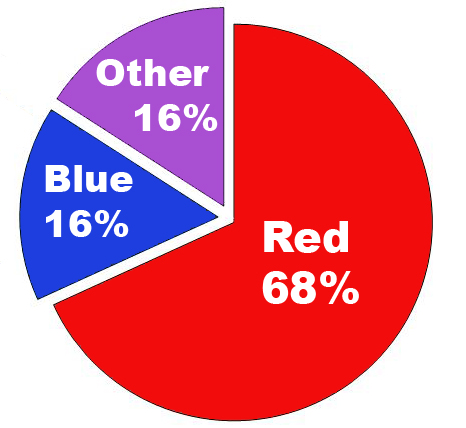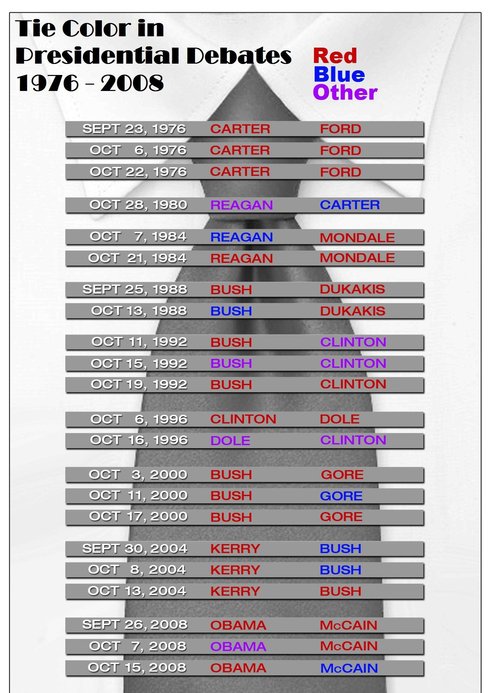The below was written for NBC's FIRST READ blog and can be found here.
Does it matter whether a candidate wears a red-or-blue necktie in the presidential debates?
Well, since the first televised in color in 1976, there have been a total of 22 Presidential debates, each with two major candidates. Therefore, there have been a total of 44 ties worn in debates over the last 9 elections.
Of those 44, a candidate has chosen to wear a red tie 30 times, a blue tie only seven times and a tie that is both colors or neither a total of seven times as well. (We’ll call this “other”).

Red has been the go-to choice for most candidates by a large margin -- but what’s more interesting is how infrequently a candidate wears a blue tie. (George W. Bush, from a party known for red, wore blue most often).
The “other” category, which includes ties that are both colors, such as blue and red striped in equal ratios, and ties that are neither color, such as grey or brown, are worn 16% of the time.
There is obviously no correlation between a candidate’s choice of tie and their rate of success (unless you’re willing to delve into the subconscious preferences of the audience), but this begs the question: what color has most often been worn by a winner?
If you count the number of times the individual color has been worn by the eventual winner, divided by how many times the color has been worn in total, the results are counter-intuitive: a candidate who has worn red has won only won 13 of 30 times, giving the tie a mere 43 percent success rate.
Candidates who have worn a blue tie won four out of seven times, a rate of 57 percent, and a candidate who has worn “both/neither” has won the most, in five of seven instances, with a success rate of 71 percent.
The most notable candidates who fall into this “other” category? Reagan in 1980 wore a brown tie; Clinton was partial to striped ties in 1992; and Obama in 2008, who dared to wear a grey tie in the second debate.

 Tuesday, October 30, 2012 at 4:22PM
Tuesday, October 30, 2012 at 4:22PM  1938,
1938,  Damage,
Damage,  Express,
Express,  Hurricane,
Hurricane,  Long Island,
Long Island,  New York,
New York,  Southampton
Southampton 


